Role of social media in social movements: Egyptian Revolution and Occupy Wall Street
Miha Poredoš
In the recent years we have witnessed a global span of protest movements which seemed to fuel its powers through the use of different social media. However the reality is often much more complex. Critical evaluation is needed when thinking how much of an influence Twitter, Facebook, Youtube, Flickr and other social (networking) media have (had) on different forms of social movements and protests. First, I’ll try to contextualize social media, their (dis)connection to protest and social movements and later try to briefly analyze role of social media in two recent social movements: Egyptian Revolution and Occupy Wall Street.
1. Introduction
2011 was a year of protests, revolutions and political change. It was a year where people all over the world tried to make their dreams of a different society reality. Wael Ghonim was the administrator of the Facebook page “We are all Khaled Said”. He said that this page and other social media were crucial for the Egyptian revolution:
“I always said that if you want to liberate a society /…/ if you want to have a free society. /…/ This is Revolution 2.0. /…/ Everyone is contributing to the content” (Ghonim quoted in Fuchs 2014b: 2).
Technology analyst Evgeny Morozov, in contrast to Ghonim, said that social media do not bring about revolutions: the talk of Twitter and Facebook revolutions is “a naive belief in the emancipatory nature of online communication that rests on a stubborn refusal to acknowledge its downside” (quoted in 2014b: 2). Pointing, clicking, uploading, liking and befriending on Facebook would be “slacktivism” – “feel-good online activism that has zero political or social impact. It gives those who participate in ‘slacktivist’ campaigns an illusion of having a meaningful impact on the world without demanding anything more than joining a Facebook group” (Morozov 2009). For Morozov (2013), Ghonim is “a man who lives and breathes Internetcentrism”– an ideology that reduces societal change to the Internet (p. 127).
2011 was also the year in which various Occupy movements emerged in North America, Greece, Spain, the United Kingdom and other countries. One of their protest tactics was to build protest camps in public squares that were centers of gravity for discussions, events and protest activities. In his online survey OccupyMedia! published in a book with the same name Austrian social media researcher Christian Fuchs found out that respondents saw the advantages of Occupy’s use of social media in allowing them to reach a broad public and to protect themselves from the police (more Fuchs 2014a). However at the same time, the respondents identified risks of the use of commercial social media saying it is “generally exploitative, and controls the output of posts”, there have been occasions where the police seemed to have knowledge “that was only shared in a private group and/or text messages and face-to-face”, many participants in calls for protests joined, but “at least 70% of them [didn’t] /…/ show up at the actual demonstration”, twitter has been willing to turn over protestors’ tweets to authorities: Youtube censored the content and several emails were being deleted by Gmail, many people even faced a lawsuit in court because their hash tags were dropped supboenas.
2. Theorizing social media
The skepticism raised in these accounts calls for critical discussion about employing the term “social media” especially regarding the social networking sites (SNS) and its’ connectedness with different form of the social, such as information (and cognition): if employing broad understanding of sociality, all forms of information are social, not only (SNS); communication: it’s important to note that computer-mediated communication did not start with Facebook and Twitter; communities: communications repeatedly taken place often involve feeling of belonging together that started earlier than Facebook or Twitter; and collaboration: computer-supported co-operative work (CSCW) in academic discussion started already in the 1980s (2014b: 4-5).
All computing systems, and therefore all web applications, as well as all forms of media can be considered social because they store and transmit human knowledge that originates in social relations in society – they are objectifications of society and human social relations. Whenever a human uses a computing system or a medium (also if s/he is alone in a room), s/he cognizes based on objectified knowledge that is the outcome of social relations. But not all computing systems and web applications support direct communication between humans, in which at least two humans mutually exchange symbols that are interpreted as being meaningful. Social media is thus a complex term with multi-layered meanings. Facebook contains a lot of content (information) and is a tool for communication and for the maintenance creation of communities. It is only to a minor degree a tool for collaborative work, but involves at least three types of sociality: cognition, communication and community (Fuchs 2014b: 6). According to that we may acknowledge several pre-Internet tools which were based on the same assumption: connecting people and exchanging [of] information.
3. Social media overview
One of the first such projects was called Usenet, a worldwide distributed discussion system, established in 1980, where users read and posted messages to one or more categories, known as newsgroups. In many ways it resembled bulletin board system (BBS) where people were connecting themselves in a similar way over local servers operated by the commercial connection provider. In many respects both were precursors of Internet forums which developed with the formation of world wide web (WWW) or Internet, as we call it today. One popular networking and media tool that developed out of BBS was Internet Relay Chat (IRC), where people communicated with each other in the form of text messages on group discussion forums (channels) and private. IRC became a popular networking and dating platform, especially among sexual minorities (as in IRC 2014). Next significant invention in the field of social media were blogs, which gained popularity with the introduction of dial-up connections to the Internet. People were usually writing them in a form of online diaries, in a chronological orders. Readers and visitors could leave comments or contact the authors. They weren’t only used to present news, opinions and experience, but also as a way of connecting remote communities, MyKnet.org of some of the Canada’s First Nation tribes used as an example of computerization movement through blogging form (more Budka 2009).
Source: Web 2.0, Wikipedia, 02.01.2007, ‘A tag cloud presenting Web 2.0 theme’ , https://upload.wikimedia.org/wikipedia/commons/a/a7/Web_2.0_Map.svg, accessed 20.10.2015
With the gradual introduction of the Web 2.0 in the end of 90’s, which allowed users to interact and collaborate with each other as creators of user-generated content in a virtual community, in contrast to Web 1.0 sites where people were limited to the passive viewing of content, the perception of social media switched into “a group of Internet-based applications [that build on the ideological and technological foundations of Web 2.0, and] that allow the creation and exchange of user-generated content.” (Kaplan and Haenlein 2010: 61) People started using software “that enables anyone without knowledge of coding, to post, comment on, share or mash up content” (Thornley 2008) and communities around shared interests started to develop in wide range of forms, using different technologies: whether as Internet forums, or weblogs, vlogs (video blogs), social blogs, or microblogs, wikis, podcasts, email, instant messaging, photo sharing, video sharing, business networks, enterprise social networks, products/services review, social bookmarking, social gaming, social networks, virtual worlds, crowdsourcing, crowdfunding and many others (see Figure 1) (more Aichner & Jacob 2015).
Figure 1: The Conversation Prism v4.0 Poster (Brian Solis, July 16 2013)
Social media differ from traditional or industrial mass media in many ways, including categories like quality, reach, frequency, accessibility, usability, immediacy and permanence (Agichtein et al. 2008). Both have the capability to reach small or large audiences. Social media operate under a dialogic transmission model (many sources to many receivers) in contrast to traditional (mass) media (newspaper, radio, television, film) that operate under a monologic transmission model (one source to many receivers) (Murthy 2013: 7-8). They enable anyone to publish or access information, whereas traditional media generally require significant resources to publish information and have many revisions before publication, or as Murthy puts it, they are “relatively inexpensive and widely accessible electronic tools that enable anyone to publish and access information, collaborate on a common effort, or build relationships” (2013: 7-8). Individuals are thus becoming media producers and social media news and networking sites are the ways their content gets exposure. Geographical or financial status are not anymore determinants of successful spreading of the information or selling a product. Whether you are a music producer, DJ, YouTube celebrity vlogger[1], small business or an anti-austerity group your ideas can get shared, commented on, talked about or being sold (more Kietzman and Hermkens 2011: 244).[2]
4. Theorizing social movements
The term “social movements” (SM) was introduced in 1850 by the German Sociologist Lorenz von Stein in his book “History of the French Social Movement from 1789 to the Present”. Since then, the term has taken different meanings and interpretations. Charles Tilly (1978) defined social movements as, “a series of contentious performances, displays and campaigns by which ordinary people made collective claims on others” (quoted in Melucci 1994). Sidney Tarrow (1994) defined a social movement as “collective challenges to elites, authorities, other groups or cultural codes by people with common purposes, and solidarity in sustained interactions with elites, opponents and authorities” (p. 4). Post-structuralist scholars like Escobar (2001) see social movements as “sources of alternatives, hopes and theories of how the world can be made differently” (2001: 2).
Despite rapid changes of theoretical paradigms throughout different time periods and histories, we could argue that most of them (especially those resultant of western [world] tradition) were related to the questions of class in society (more Fuchs 2005, Article 2015: 6-7). However in late (informational) capitalism the situation has fundamentally changed. Conflicts are not only struggles for material property such as technologies, machines, capital, and natural resources, but also conflicts over symbolic and informational goods such as knowledge, values, genetic information, human rights, nature as a preservable and valuable good, democracy, and peace (Fuchs 2005: 2). Deprivation and powerlessness no longer automatically result in protest as in the 19th century. Society has become more complex, and hence the patterns of class and protest have increased in complexity too.
This is not the point to write at length[3] about different Social movement theories, rather I would like to briefly focus on two most dominant and debated approaches in recent history: Resource Mobilization Approach (RM), developed in the US and the New Social Movement Approach (NSM), developed in Europe (as in Fuchs 2006) that served as sources for scholarly debate about conjunctions between social media and social movements, especially regarding self-organization of the latter and lead to the development of recently very popular Networks theories.
The first, Resource Mobilization approach (RM), has its roots in the tradition of Rational Choice Theory that considers actors as rationally calculating gains and losses that stem from certain potential actions, and make choices for or against certain actions based on such calculations. SMs were explained as the result of the successful mobilization of resources and political opportunities by rational actors. Such resources would both be material (money, organizations, manpower, technology, means of communication, mass media) and non-material (legitimacy, loyalty, social relationships, networks, personal connections, public attention, authority, moral commitment, solidarity). However, resource mobilization’s tendency to spotlight resources and organization, while ignoring the role of culture in collective action, provoked a reaction amongst social movement scholars, particularly in Europe, and leaded to the paradigmatical shift from structural to cultural analysis of collective action (Tarrow in Milberry 2003: 33).
Within a framework of culture, identity became a focal point of the second approach to mention here, that of New Social Movements (NSM). Turn to culture in NSM theory signaled a shift away from structural analysis that had typically marked European scholarship, which argued, that the social base of new social movements tended to transcend class structure, with the search for identity becoming key to movement formation (2003: 38). NSM theorists stressed that structural conditions and changes of society cause the emergence of social movements and strongly opposed economic reductionism and class reductionism: “The emergence of SMs cannot be explained solely by economic changes and the position of actors in the production process, but form due to non-class issues such as gender, ethnicity, age, neighborhood, environment, or peace.” (Fuchs 2006: 103) Marxism, as the traditional master framework for understanding collective action was usurped by culture, within which the concept of identity rose to prominence. That is to say, activists in new social movements turned their gaze inwards, focusing on issues as they affected their personal lives, and pursuing social change through politicizing culture (Melluci 1994: 109).
Figure 2: A model of protests and revolutions and the role of crises, the media, ideology and politics (Fuchs 2012: 786)
Christian Fuchs, one of the leading social media theorist notes two main differences between those two approaches, namely that they focus either on macro-aspects and externalism or on micro-aspects and internalism (Fuchs 2006: 101). Fuchs argues that SMs in information capitalism form through self-organization, which takes into account both internal and external, structural- and action-based aspects of social movements and that it allows a dynamic concept of protest (see Figure 2). Summarizing his idea of self-organization approach, we can argue that SMs formation in comparison to both previously debated, can be seen as dynamic and complex process on both a micro and a macro level, as SMs are based on the permanent emergence and reproduction of their self-created protest practices and structures.
Fuchs understanding of SMs formation overlaps and links with many ideas of Network theorists, who helped addressing the division, created by a narrow focus on identity as mediated through cultural analysis. According to Castells (1996) “new information technologies, by transforming the processes of information processing, act upon all domains of human activity, and make it possible to establish endless connections between different domains, as well as between elements and agents of such activities” (p. 67). The result is a deeply networked, interdependent economy that has transformed society; in fact, the network became the central organizing principle of the information society (Milberry 2003: 41). The Internet became the matrix in which contemporary social justice-oriented movements established, as it’s architecture is reflective not only of the organization of these movements (i.e. non-hierarchical, decentralized) but also their values and goals (i.e. participatory democracy). As Dyer-Witheford (1999) observes: “New information technologies therefore appear not just as instruments for the circulation of commodities, but simultaneously as channels for the circulation of struggles” (p. 128). Thus, social movements became increasingly global both in target and in form (Milberry 2003: 43).
5. Network activism
The movements that opposed corporate globalization[4], like the Zapatistas, the Anti-Corporate Globalization Movement (ACGM) and IndyMedia Center (IMC). are prime examples of such network-based social movements, not only in the sense of organization, but also in a way of contesting the power within the cyberspace [the Internet] – by making it an important political arena – “a medium within which terrestrial struggles can be made visible to and linked with one another” (Dyer-Witheford 1999: 121; compare Budka 2011). Cyberspace put revolutionary potential in the hands of social justice activists [5], which contested actual nature and consequences of current global socioeconomic relations and foundations governing them. The new “species” of activists, according to Diebert (2000) “cross-national network of citizen activists linked by electronic mailing lists and World Wide Web” (quoted in 2003: 54), engage themselves with cyberactivism, variously defined as “politically motivated movement relying on the Internet” (Vegh 2003:. 710); “use of the Internet to become informed, to communicate and to organize activities” or “the extensive use of the Internet to provide counter-hegemonic information and inspire social mobilizations” (Morris & Langman quoted in 2003: 55). While cyberactivism can take many forms, such as cyber-protest (‘Hacktivism’), virtual sit-ins, web site defacement (Anonymous), and email campaigns, the term is limited here to describing the organizing and mobilizing of contemporary social justice movements. Yet the transformative potential of networked activism lies not in the technology it uses but in the actions it fosters (Land 2009: 241).
6. Egyptian revolution
The Egyptian uprising on social media echoed the previous civil unrest and disobedience in Tunisia, which was triggered by the self-immolation of Mohammed Bouazizi. By committing his desperate act in front of the office of the regional governor, Bouazizi forced the regime to assume political and moral responsibility for his situation, thus turning him into a symbolic representative of millions of young Tunisians who lacked opportunities for socio-economic advancement (Breuer 2012: 18) and after a series of uprisings against the president Ben Ali and his 23 years of reign in Tunisia, left him resign on 14th of January 2011.
https://www.youtube.com/watch?v=jHw_auqod6Y
Source: Loxa Holly, 26.01.2011 ‘Mohammed Bouazizi. A tunisian martyr.’ https://youtu.be/jHw_auqod6Y, accessed 20.10.2015
Similar socioeconomic, generational and regional disparities in Egypt, led to the first bigger massively attended protest on the 25th of January 2011 at Tahrir square in Cairo. Scholarly debates about organization of this protest are very contradictory (comp. Fuchs 2014b; Castells 2012; Shirky 2011; Harvey 2012) but they agree on the fact, that one of the motivational causes was the brutal murder of 28-year-old Khaled Said at the hands of Egyptian police in Alexandria in June 2010. His death[6] became a strong motivation for internet activists. Following this event, Wael Ghonim, an Egyptian Google executive established a Facebook ‘group’ Kulina Khalid Said (‘We Are All Khaled Said’ – WAAKS) open for all Facebook members to join and campaign against police brutality. In doing so Ghonim sparked an online mobilization that ultimately led to the demonstrations in Cairo on 25 January 2011 and, eventually, Mubarak’s ouster in February 2011 (more Eaton 2013: 8-11).
ACHTUNG: Daten nach YouTube werden erst beim Abspielen des Videos übertragen.
Source: Iyad El-Baghdadi, 01.02.2011 ‘Meet Asmaa Mahfouz and the vlog that Helped Spark the Revolution’ https://youtu.be/SgjIgMdsEuk, accessed 20.10.2015
The date for the first protest in Tahrir square was debated among Ghonim and other popular Facebook pages’ administrators (for example 6 April Youth Movement) to be on the National Police Day in Egypt, 25th January, but it wasn’t the WAAKS who called for the protest, but a recording by a young Egyptian woman Asma’s Mahfouz (look above), released only one week before the protest day, which motivated thousands to respond to the call of Omar Afifi and participate in the demonstration. In fact, the determining factor of the demonstrations’ success was the ability of the activists to attract people onto the streets, as the fluxes of protesters that started in different areas of Cairo picked up people, from different neighborhoods and different socio-economic and religious backgrounds (Eaton 2013: 3). Protests turned into violent clashes with police (look below), several people were killed everyday.
ACHTUNG: Daten nach YouTube werden erst beim Abspielen des Videos übertragen.
Source: Khaled Abol Naga, 06.02.2011, ‘shot 1 Feb 2011 @ Tahrir Square, Cairo Egypt – #25jan Revolution’ https://www.youtube.com/watch?v=ZO6G93nNd_g, accessed 20.10.2015
While Facebook was most important in the build-up of the protest, Twitter was a far more effective tool for activists once on the ground, as they were often able to use the Twitter interface through their mobile phones (2013: 13). The following tweet from the well-known blogger Mahmoud Salem, sent on 11 February, offers a good example:
‘Need more protesters on the Salah Salem side. There are only 1000 there with thousands on the Roxy side.” (qouted in Idle and Nunns 2011: 212).
This short message is a perfect snapshot of the utility of Twitter. The update was sent to those protesting and following hashtag #jan25 on Twitter, to communicate a weakness in the protest, circumnavigating the need for a chain of command and allowing the protesters to respond quickly to emergent threats. The government subsequently cut the Internet off on 28th January (see Figure 3), presumably hoping that activists would flounder once deprived of their means of communication, however the opposite proved true. The number of Twitter posts in Egypt under the hashtag #jan25 became the “WAAKS of the Twitter world” and exploded after internet blackout (Gerbaudo 2012).
Figure 1: Graphic representation of Egypt’s internet blackout, 28 January 2011 (Eaton 2013: 12)
The same way as Egyptian internet activists had been vocal supporters of the Tunisian opposition’s quest to oust President Ben Ali, their Tunisian counterparts returned the favor in that period. People started to communicate through mobile phones, distributing SMS messages, more likely than calling. As Rheingold (2000) observes, through the use of technology, people are able to create networks of communication instantly as a result of their ‘perpetual connectivity’ (p. 212). Castells (2009) also notes that, in a world of networked mass communication, ‘one message from one messenger can reach out to thousands, and potentially hundreds of thousands’ as it proliferates through the network society (p. 348). This form of networked distribution is key, because it means that, at every stage, the receiver identifies the information as coming from a known – and, crucially – trusted, source. This transforms the wireless communication network into a network of trust, in which the receiver is likely to show greater faith in the information (2013: 14).
Figure 4: We are all Khaled Said cartoon (Gerbaudo 2012: 57).
Despite the emphasis on Facebook and Twitter (see Figure 4), new technologies and web-based applications very rarely operate in isolation: their compatibility and ability to interact with one another is demanded by their users and is a key catalyst in the proliferation of communication power (2013: 14). This also refutes theories debated among many western technological determinists (see Castells 2012: Harvey 2011 in Fuchs 2012: 791-794). But not only that. In his book Tweets and the Streets. Social Media and Contemporary Activism, Paolo Gerbaudo (2012) on theoretical and empirical grounds challenged the assumption of Castells’ and others that the Internet brings about leaderless movements. His ethnography among activists, about their use of social media in protests, found out that although contemporary social movements claim that they are leaderless networks, there are soft leaders that make use of social media for choreographing protests and “constructing a choreography of assembly”[7] (2012: 139): “a handful of people who control most of the communication flow” (2012: 135).
7. Occupy Wall Street
Similar tactics were also used in Occupy Wall Street (OWS) movement, that was partly inspired by the Arab Spring happening in the winter same year and the the Spanish Indignados movement that began in mid-May 2011, with camps and sit-in’s, at the begining in Madrid, and later spreading all around Spain and across the world. In mid-2011, the Canadian-based group Adbusters Media Foundation, proposed a peaceful occupation of Wall Street to protest corporate influence on democracy, address a growing disparity in wealth, and the absence of legal repercussions behind the recent global financial crisis under the post titled “A Million Man March on Wall Street.” (Occupy Wall Street, 20.10.2015). On 30 May 2011, a leader of the Indignados, inspired by the Arab Spring happening, 5.18 Movement of 1980, and June Democracy Movement of 1987 called for a worldwide protest on 15 October.
ACHTUNG: Daten nach YouTube werden erst beim Abspielen des Videos übertragen.
Source: xen0nymous, 10.09.2011, ‘Anonymous – Occupy Wall Street’ https://www.youtube.com/watch?v=l6jdkpQjueo, accessed 20.10.2015
Then in an unrelated incident, a group called New Yorkers Against Budget Cuts (NYABC) was formed, which promoted a “sleep in” in lower Manhattan called “Bloombergville,” in July 2011, preceding OWS, and provided a number of activists to begin organizing. Activist, anarchist and anthropologist David Graeber, and several of his associates, attended the NYABC general assembly (GA) but, disappointed that the event was intended to be a precursor to marching on Wall Street with predetermined demands, Graeber and his small group created their own general assembly, which eventually developed into the New York General Assembly. The group began holding weekly meetings to work out issues and the movement’s direction, such as whether or not to have a set of demands, forming working groups and whether or not to have leaders (Graeber 2012). The protest movement began on September 17, in Zucotti Park, located in New York City’s Wall Street financial district, Adbusters created a poster advertising it (see Figure 5) and the internet group Anonymous a video (above) encouraging its supporters to take part in the protests.[8]
Figure 5: Adbusters poster Figure 6: Occupy Hand signals (both Wikipedia, 3.11.2015)
The protesters not only relatively successfully and peacefully occupied Zucotti Park for almost a month – until they were forced out on the 15th of November and focused to occupying banks, corporate headquarters, board meetings, foreclosed homes, college and university campuses – but also initiated some of the later widely used communication practices (see Figure 6), internet meme folklore (see Casually Pepper Spray Everything Cop), and even their very own interconnected communication network – or Internet – within the occupied area called Freedom Tower (FIF), that broadcasted live streams of GAs over webpage Occupytogether.org[9]
ACHTUNG: Daten nach YouTube werden erst beim Abspielen des Videos übertragen.
Source: The Top Vlog, 18.10.2011, ‘A Director for the Free Network Foundation Gives Free WiFI, Advice.’ https://youtu.be/71RgrxRcVuA, accessed 20.10.2015
Despite apparent strong support of OWS on social (networking) media (popularity of Twitter and Facebook hashtag #OWS and #Occupy) several studies shown that the social media impact on protest and revolution are not necessarily the most important ones, regarding information, mobilization and coordination during demonstrations, as some of the techno-euphoric and techno-determinists thinkers have suggested (look Castells 2012; Gladwell 2010, Shirky 2011, Sullivan in Fuchs 2012: 791-795). One good example for affirming this position for OWS can be taken from the Occupy General Survey that was conducted among OWS activists, which shows that that both direct face-to-face interaction and mediated interaction have been crucial news sources for Occupy activists. Broadcasting and newspapers had a much less important role than the Internet. Facebook was a very popular source of information, however older online media (email, websites) played a much more important role than YouTube, blogs, Twitter and Tumblr, which shows that one should not overestimate the role of what some have called “web 2.0” in protests (Fuchs 2012: 790) Similar concludes also sociologist Alex Vitale:
“Millions of Facebook posts, tweets, and policy white papers have failed to galvanize a mass movement. Instead it was the occupation of public spaces, marching without permits, and disruption of daily life in the Financial District that signaled an open-ended defiance lacking in previous efforts.” (2011: 79).
The results of the Survey allow us to conclude that the Occupy movement makes use of multiple communication channels and that the alleged newness of “social media” should not blind us from the importance of interpersonal face-to-face communication and older online media, especially when analyzing the information structures of social movements (Fuchs 2012: 790).
8. Conclusion
Digital infrastructures empower protest movements in specific ways, and recent uprisings and large protests around the world have provided indications of this power. However, some of the same mechanisms of digitally-fueled empowerment have paradoxically led to dis-empowering side effects. Further, many governments have developed methods to respond to this new information environment, which allows for fewer gatekeeper controls, by aggressively countering these new movements, often with a combination of traditional repression as well as novel methods aimed at addressing online media (Tufekci 2014: 1).
Social media have greatly empowered protesters-activists in three key areas: public attention, evading censorship, and coordination or logistics. Old forms of gate keeping, which depended on choke point access control to few broadcast outlets, neither work as effectively nor in the same way as they did in the past. Digital technologies provide a means by which many people can reach information that governments would rather deny them. Street protests can be coordinated on the fly. However the influence of social media on the practice of protest has complex and sometimes unexpected results, including weak policy impacts and threats to the sustainability of movements (2014: 2).
A common criticism of the Internet’s role in society has been that it leads to “slacktivism”—the tendency to click on links or like posts rather than taking concrete actions or steps. However, dividing the concept of “actions” into online and offline spheres often misses the point of social movements (Tufekci 2014:8). As Charles Tilly (2001), argues, at their core, social movements are demonstrative in that they display worthiness, unity, numbers, and commitment (p.26) Worthiness is about convincing people of the rightness of a cause. Unity is a signal of determination; numbers illustrate public support; and commitment is indicative of the ability to persist and potentially disrupt. Hence, participants’ acts within a protest movement should be judged on the basis of whether they can achieve those goals, rather than on an artificial division between online and offline or between virtual and “the streets.” (2014: 9)
[1] More about vlogging in the article Vlogging: Power and Community also featured on this blog.
[2] Department of Anthropology at University College London (UCL) is currently doing an ongoing research The Global Social Media Impact Study dedicated to understanding the implications of social networking sites for global humankind and society, and explaining their significance for the future of the social sciences.
[3] For those interested in the topic I suggest browsing through the pages 6-12 of the paper Role of social media in social movements: Egyptian Revolution and Occupy Wall Street, which is an extended work of this blog. Additionally I suggest reading works of C. Fuchs, a social media scholar, accessible on his web page.
[4] Anti-corporate globalization activists are clear that while they oppose the globalization of capitalism and neo-liberalism, they very much support the globalization of equality, democracy, human rights, and environmental and social justice (Milberry 2003: 43).
[5] More about these three principal New Social Movements you can read in the chapter 4. of the Article, p. 12-15.
[6] The official line that he had died while choking on a bag of drugs convinced no one. Pictures of Said’s severely beaten corpse published by the blogger Zeinobia showed his skull and jaw with clear fractures that left the police claim that he had died of asphyxiation untenable. One thousand people attended Said’s funeral in Alexandria, while activists protested outside of the Interior Ministry’s offices in Cairo (Eaton 2013: 8).
[7] The choreography of assembly means “the use of social media in directing people towards specific protest events, in providing participants with suggestions and instructions about how to act, and in the construction of an emotional narration to sustain their coming together in public space” (Gerbaudo 2012: 12). The movements’ spontaneity would be organised “precisely because it is a highly mediated one” (Fuchs 2012: 164).
[8] OWS became world known by the phrase “We are the 99%”, a political slogan first used by the participants in the Occupy movement, but originally launched as a Tumblr blog page in August 2011, referring to the contraction of wealth among the top 1% income earners compared to the other 99 percent in the US. It was later appropriated also in other countries along with the Twitter #Occupy hash tag format.
[9] More about the organizational structure of OWS in the Article, Chapter 7, p. 22-23 .
References:
Agichtein, Eugene; Castillo Donato, Carlos; Gionis, Aristides; Mishne, Gilad, 2008, “Finding high-quality content in social media”. WISDOM – Proceedings of the 2008 International Conference on Web Search and Data Mining: 183–190.
Aichner, T. and F. Jacob, 2015, “Measuring the Degree of Corporate Social Media Use”. International Journal of Market Research 57(2): 257–275.
Berenger, Ralph D., 2013, Social Media Go to War: Rage, Rebellion and Revolution in the Age of Twitter, Marquette Books.
Breuer, Anita, 2012, The Role of Social Media in Mobilizing Political Protest: Evidence from the Tunisian Revolution. Discussion Paper, Bonn: Deutsches Institut für Entwicklungspolitik, <PDF> (accessed on 21.10.2015).
Budka, Philipp, 2011, From Cyber to Digital Anthropology to an Anthropology of the Contemporary, Paper at the DGV (German Anthropological Association) Workshop “Cyberculture” 15 September 2011, University of Vienna, <PDF>, (accessed on 20.7.2015).
Castells, Manuel, 1996, The Rise of the Network Society: The Information Age: Economy, Society and culture Vol. 1, Cambridge, MA; Oxford, Uk: Blackwell.
Castells, Manuel, 2009, Communication Power. Oxford; New York: Oxford University Press.
Castells, Manuel, 2012, Networks of Outrage and Hope. Social Movements in the Internet Age. Cambridge, MA: Polity Press.
Dyer-Witheford, Nick, 1999, Cyber-Marx: Cycles and circuits of struggle in high technology capitalism. Champaign: University of Illinois.
Eaton, Tim, 2013, “Internet Activism and the Egyptian Uprisings: Transforming Online Dissent into the Offline World.” Westminster Papers in Communication and Culture 9(2): 3-23.
Escobar, Arturo, 2001, Encountering development: The Making and Unmaking of the Third World. Princeton: Princeton University Press.
Fuchs, Christian, 2005, Social Movements and Class Analysis, <PDF>, (accessed on 15.7.2015).
Fuchs, Christian, 2006, “The Self Organization of Social Movements”, in: Systemic Practice and Action Research, 19(1): 101: 137.
Fuchs, Christian, 2012, “Some reflections on Manuel Castells’ book “Networks of outrage and hope. Social movements in the Internet age“”, tripleC – Open Access Journal for a Global Sustainable Information Society 10(2): 775-797, <PDF>, (accessed on 16.10.2015).
Fuchs, Christian, 2014a, OccupyMedia! The Occupy Movement and Social Media in Crisis Capitalism. Winchester: Zero Books.
Fuchs, Christian, 2014b, Social Media: A Critical Introduction. London: Sage.
Gerbaudo, Paolo, 2012, Tweets and the Streets: Social Media and Contemporary Activist. London: Pluto Press.
Ghimire, Kleber B., 2005, “The Contemporary Global Social Movements”, in: Emergent Proposals, Connectivity and Development Implications: Programe Paper Number 19, UN Research Institute for Social Development.
Ghonim, Wael, 2012, Revolution 2.0. London: HarperCollins.
Gladwell, Malcolm, 2010, “Small change: why the revolution will not be Tweeted.” Available at: <https://www.newyorker.com/reporting/2010/10/04/101004fa_fact_gladwell (accessed on 19.10.2015).
Graeber, David, 2004, Fragments of an Anarchist Anthropology. Chicago: Prickly Press.
Graeber, David, 2012, Inside Occupy. Frankfurt: Campus.
Harvey, David, 2012, Rebel Cities. From the Right to the City to the Urban Revolution. London: Verso.
Kietzmann, H. Jan and Kristopher Hermkens, 2011, “Social media? Get serious! Understanding the functional building blocks of social media”. Business Horizons 54: 241–251.
Kaplan Andreas M., Haenlein Michael, 2010, “Users of the world, unite! The challenges and opportunities of social media”. Business Horizons 53(1): 61.
Land, B. Molly, 2009, “Networked Activism” Human Rights Journal 22: 206-243.
Melucci, Alberto, 1994, “A strange kind of newness: What’s ‘new’ in new social movements.”, in: E. Larana, H. Johnston, & J. R. Gusfield (eds.), New social movements: From ideology to identity, Philadelphia: Temple University, pp. 101–130.
Milberry, Kate, 2003, IndyMedia as a social movement? Windsor: University of Windsor., <PDF>, (accessed on 20.10.2015).
Morozov, Evgeny, 2009, Opinion: Internet Activism Accomplishes Little. Newsweek (28.06.2009), <https://www.newsweek.com/opinion-internet-activism-accomplishes-little-80771>, (accessed on 20.10.2015)
Morozov, Viatscheslav ed., 2013, Decentring the West: The Idea of Democracy and the Struggle for Hegemony. Farnham: Ashgate Publishing Group.
Murthy, Dhiraj, 2013, Twitter: Social Communication in the Twitter Age. Cambridge: Polity press.
Shirky, Clay, 2011, “The Political Power of Social Media.” Foreign Affairs 90(1): 28-41.
Tarrow, Sidney, 1994, Power in Movement: Collective Action, Social Movements and Politics. Cambridge, MA: Cambridge University Press.
Tilly, Charles, 1978, From Mobilization to Revolution, Reading, MA: Addison-Wesley.
Tilly, Charles, 2011, “Mechanisms in Political Processes.” Annual Review of Political Sociology 4: 21–41.
Thornley, Joseph, 2008, What is “social media”?¸ in: ProPR (08.04.2008), <https://propr.ca/2008/What-is-social-media/>, (accessed on 1.7.2015).
Tufekci, Zeynep, 2014, “Social movements and governments in the digital age”, in: Journal of International Affairs 68(1): 1-18.
Vegh, Sandor, 2003, “Classifying forms of online activism: The case of cyberprotests against the World Bank.” in: Martha McCaughey and Michael D. Ayers (Eds.) Cyberactivism: Online activism in theory and practice. New York: Routledge.
Vitale, Alex, 2011, “NYPD and OWS: A Clash of Styles,” in: Occupy! Scenes from Occupied America, Astra Taylor, Keith Cessen et al. (Eds.), New York: Verso.


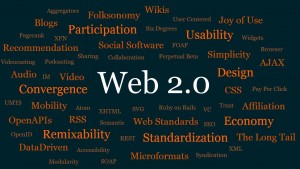
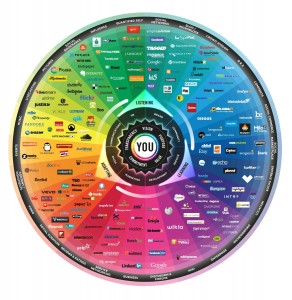
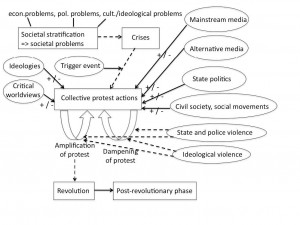
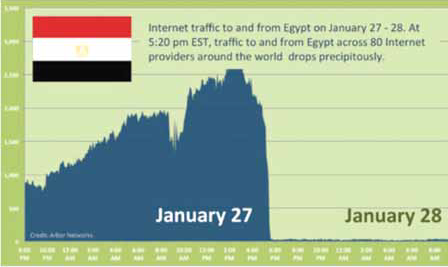
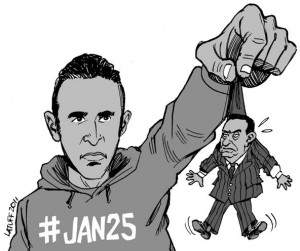
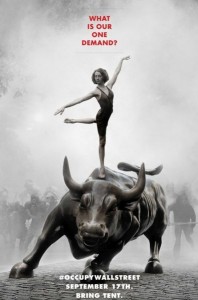
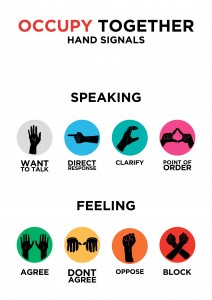
 Die
Die